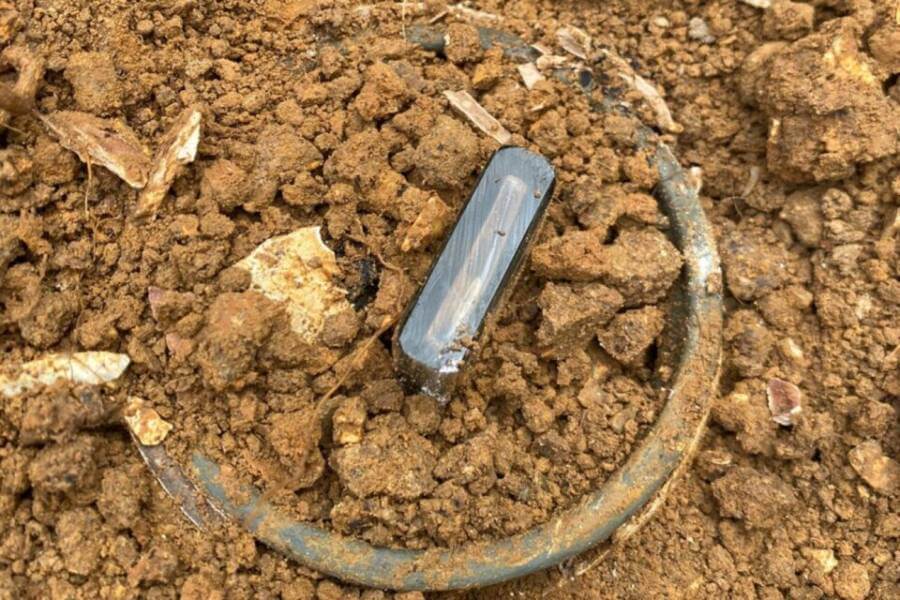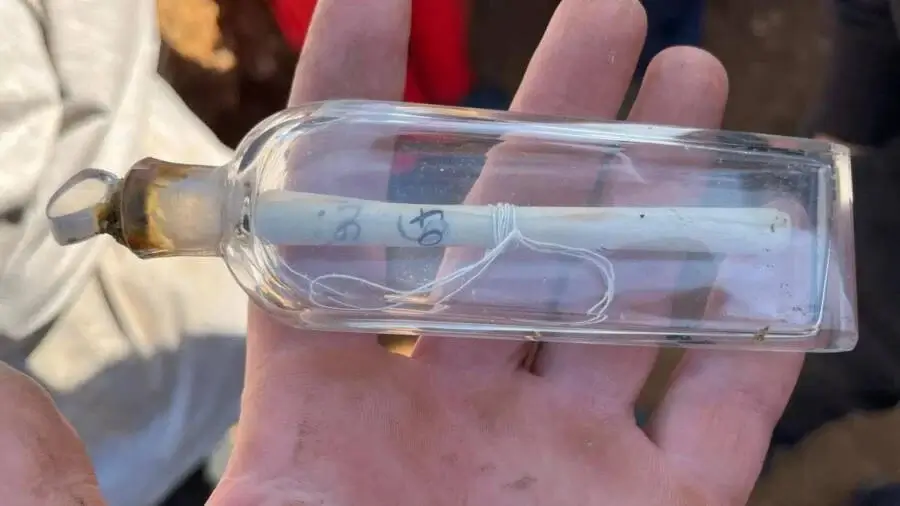200-Year-Old Message in a Bottle Unearthed in Northern France: An Archaeological Time Capsule
Archaeology is full of surprises, but how often do archaeologists dig up notes left behind by their peers from centuries ago? Recently, a team of student archaeologists working in Dieppe, France, experienced a surreal moment when they discovered a 200-year-old message in a bottle. And no, it wasn’t a love letter or a treasure map—it was a note from a fellow archaeologist.
A Message From the Past
The discovery happened at an ancient Gaulish village on the Normandy coast known as Caesar’s Camp. As the team unearthed centuries-old relics, a small, modern-looking object caught their attention. According to the BBC News, it appeared out of place. At first, the students weren’t sure what they had found—a piece of debris, perhaps?
But as they dug further, the truth became clear. What they had in their hands wasn’t just another Gaulish artifact. It was a small glass vial, inside of which was a message tied with string.
Unearthing the 200-Year-Old Note
Guillaume Blondel, the local archaeologist leading the dig, recounted the moment they realized what they had found. The object, he said, appeared to be “a pot covered with a small glazed cup,” and from within it, a “white glass object” protruded. The team’s initial thoughts were that it could be unexploded ordnance from World War II, but further investigation revealed something far more intriguing—a salt bottle, similar to what 19th-century women used to prevent fainting.
Inside that bottle? A note rolled up and tied with string.
What Did the Message Say?
Naturally, curiosity got the best of the student archaeologists. Could it be a romantic note? An old family recipe? The imagination ran wild. But once Blondel carefully unrolled the paper, the truth was even more fascinating. The note was from P.J. Féret, an archaeologist who had excavated the same site in January 1825.
The note read:
“P.J Féret, a native of Dieppe, member of various intellectual societies, carried out excavations here in January 1825. He continues his investigations in this vast area known as the Cité de Limes or Caesar’s Camp.”

Not exactly a page-turner, but an amazing discovery nonetheless. Féret had worked in the same area 200 years ago, uncovering the first evidence of Gaulish presence. And now, centuries later, another team was picking up where he left off.
Why Is This Site So Important?
The site, known as Caesar’s Camp, is a historic Gaulish village. It’s one of the many sites along the Normandy coast that are slowly disappearing due to coastal erosion. The cliffs of Dieppe are crumbling into the sea, and with them, centuries of history.
Read more: Did the San People Paint a Creature from 200 Million Years Ago?
Blondel and his team are racing against time to excavate and preserve these remnants before they vanish completely. Their goal is to understand the full breadth of the site’s historical significance, using maps, photos, and archaeological evidence to capture it before it’s too late.
What’s Next for This Archaeological Dig?
As exciting as the discovery of Féret’s message is, there’s still a lot more to uncover. The site raises numerous questions. Was it a place of habitation? A place of power? Or a temporary refuge? These are questions the team hopes to answer as they continue their excavation.
One thing is certain, though: while Féret may have started the work, Blondel and his students are carrying the torch. They’re not just uncovering artifacts; they’re preserving a piece of history for future generations.

The Clock Is Ticking
The situation is urgent. In Dieppe, the retreating coastline has already claimed a Gallo-Roman temple that once stood proud. In 1996, one corner of the temple remained. Now, it’s entirely gone, swallowed by the sea. It’s a haunting reminder that history is fragile, and time waits for no one.
The hope is that, even as these historic sites crumble, modern technology can capture them in a way that preserves their legacy. And just as Féret left behind a message for future archaeologists, the team hopes their work will provide future generations with a clearer understanding of France’s ancient past.
Preserving History
The discovery of Féret’s message is a powerful reminder of the fleeting nature of history. Coastal erosion, climate change, and other factors threaten archaeological sites around the world. The question we need to ask ourselves is: what can we do to protect these sites before they disappear?
If you’re passionate about preserving history, there are many ways to get involved. Support archaeological organizations, contribute to research, or simply stay informed about the issues facing historic sites globally. After all, every artifact, every relic, every note in a bottle tells a story that deserves to be remembered.





